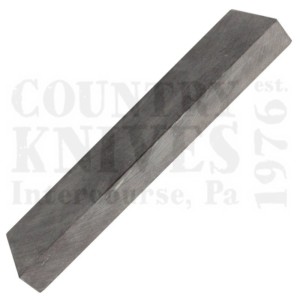Ardennes-Coticule
In Roman times expeditions were sent to Belgica, almost at the border of the Empire, all because of the discovery of a unique type of rock that could create an unrivaled edge on all kinds of cutlery. Coticule whetstones have been mined in the Belgian Ardennes since 1625. In 1770 the French master knifemaker Jean-Jaques Perret spent an entire chapter in his book "La pogonotomie, or the art of how to shave oneself" discussing the amazing razor hones made from this rock. Up until late into the second half of the 20th Century, Coticule hones were exported all over the world and considered the "nec plus ultra" for sharpening scalpels, laboratory equipment and straight razors. Today a flourishing niche of users of these amazing hones remains intact.
Ardennes-Coticule, founded in 1998, is carrying on the commercial business that began 1865 and is the last and only remaining supplier of Belgian Blue and Coticule (yellow) whetstones. The stones are mined from a 480 million year old yellow-grey sedimentary rock built up from clay and volcanic ash with garnet crystals. These unique deposits are only found in the Ardennes. The whetstones from Ardennes Coticule are also known as Belgian chunks, named after the chunks of stone required for the production of the Coticule and the Belgian blue whetstone. Both products are real natural products with a labor-intensive mining process. One ton of raw material is required to produce two pounds of usable whetstone.
The Belgian Whetstone consists of 30 to 42% garnet crystals bonded together with mica. These garnets are what give the Coticule its exceptional sharpening characteristics. The geometrical shape of these garnets is a dodecahedron. There are twelve surfaces with obtuse angles. The garnets have a diameter of 5 to 15 microns and penetrate 1 to 3 microns into the metal to be sharpened. This ideal geometric shape (obtuse angles polish the metal) and the large numbers of these garnets ensure that the blade is sharpened both very quickly and extremely finely. In just a few minutes, this results in a razor-sharp cut, for any object that is to be sharpened.
The Belgian whetstone is often compared to a 4000-8000 grit whetstone, using the Japanese grit system, but one must bear in mind that it is a natural product, and therefore no stone is 100% identical to another. The grit rating is given purely for information, and tells you little about the specific characteristics of the stone. The advantage compared to other whetstones is: A Belgian whetstone sharpens very finely and very quickly. No other whetstone possesses this combination.
Both stones sharpen to a keen razor edge. The Coticule is a yellow stone supplied on a (unusable) slate. Belgian Blue contains fewer garnets than the Coticule and are usually larger and less expensive. This stone is harder and sharpens slower than the Coticule. The sharpening result obtained with both stones is almost identical. Because they are natural products each stone is unique.





